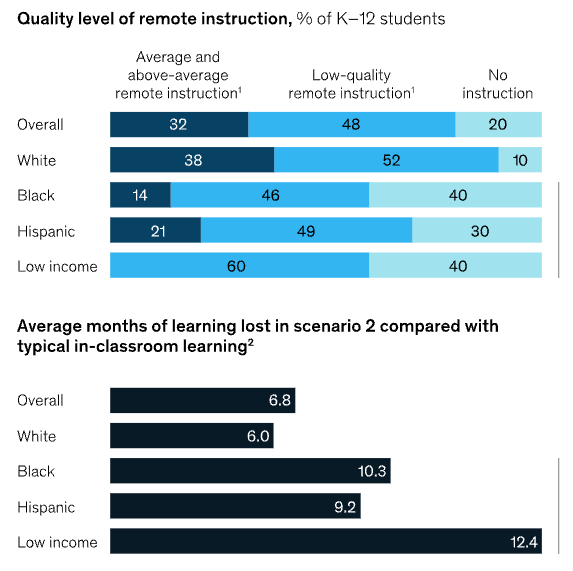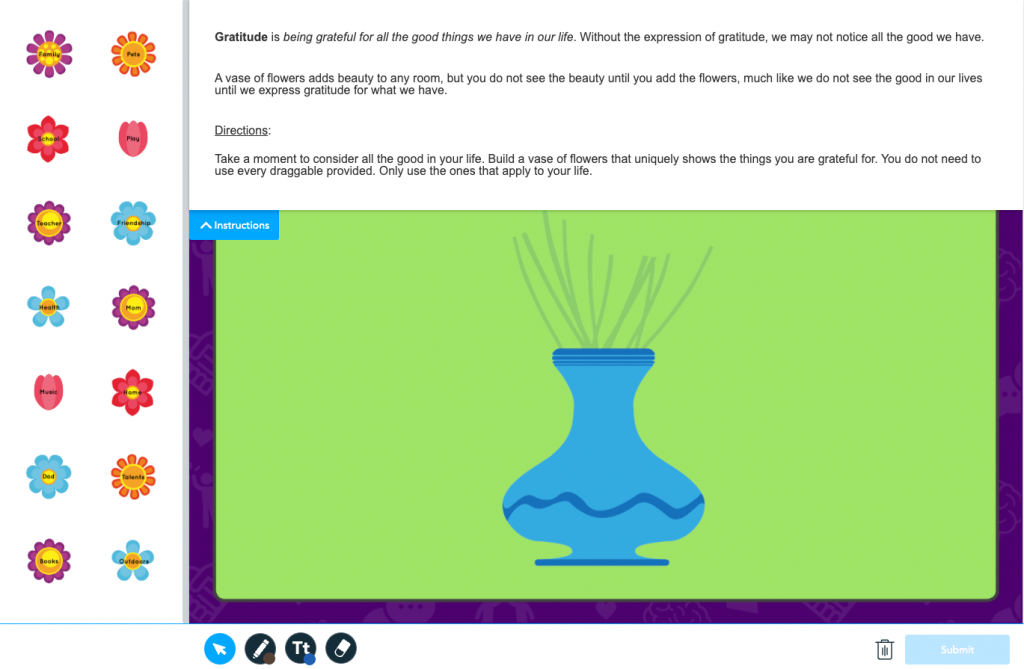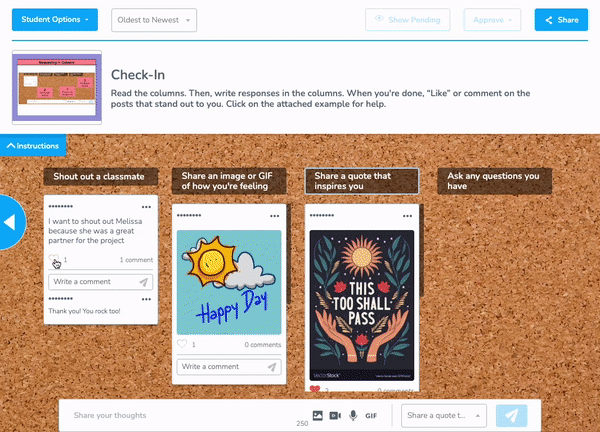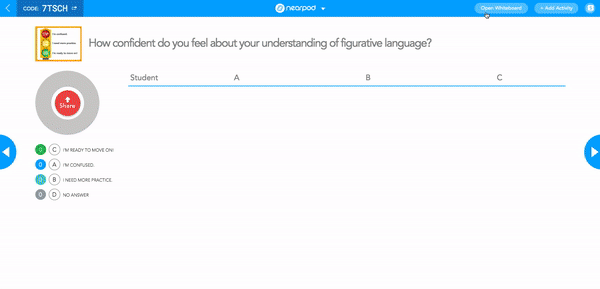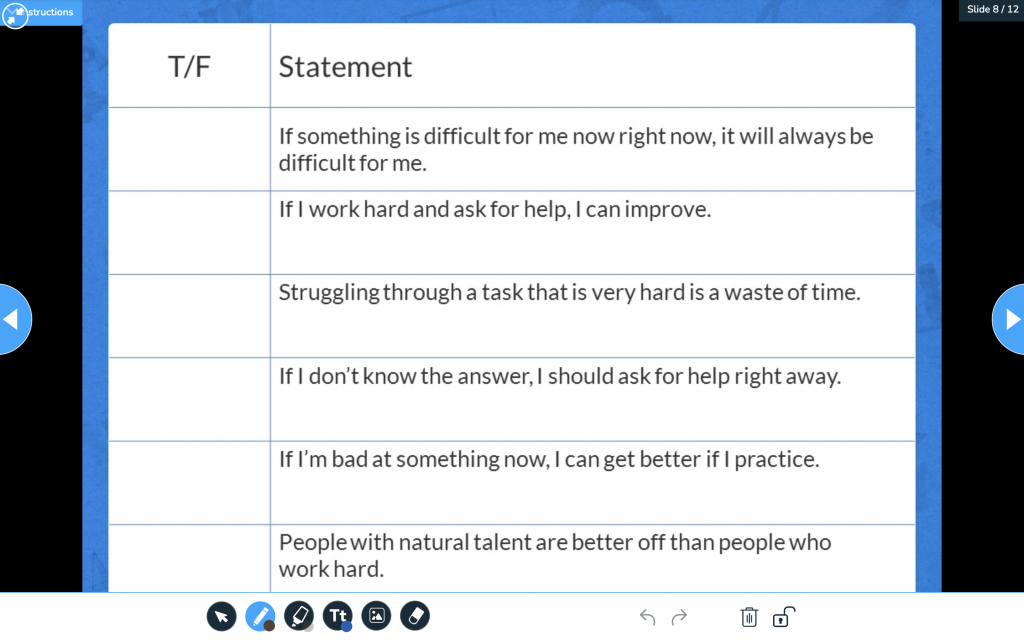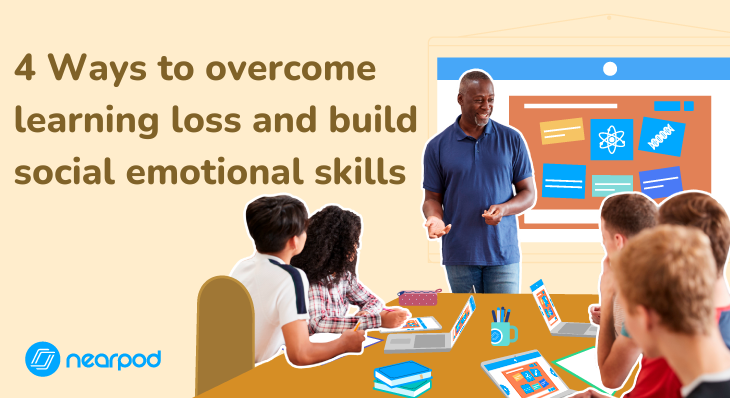
- Instructional resources
- Leadership
- Pedagogy
- Social & emotional learning
- Teachers
- Thought leadership
- Trends in education
4 Ways to overcome learning loss and build social emotional skills
What is learning loss?
As educators and parents grow increasingly concerned about the impact of the COVID-19 pandemic on students, “learning loss” has become the center of many conversations. Often, the discourse implies that educators should focus on precisely measuring and monitoring the amount of knowledge and skill lost to the pandemic. But this narrow view of the issue may miss the true scope of the problem. This unprecedented period of loss goes far beyond lost learning—milestones missed, loss of normalcy, and lives lost.
This is why, at Nearpod, we’ve reframed the issue around what we should do moving forward: How can educators create an environment where both learning and whole child needs are maximized?
The problem of learning loss is: It’s not the only problem
To address this question, we must confront a reality that the pandemic has only exacerbated; COVID-19 has compounded existing inequalities. As a result, learning loss (as well as other losses) is predicted to affect Black and Latinx students disproportionately. This has the potential to impact educational outcomes for years to come. Therefore, any solutions must be culturally responsive and equity-based.
There won’t be one simple answer; overcoming the impact of this period of loss will take innovative solutions and a dedication to students’ social and emotional needs, as well as their academic ones.
In these efforts, we know that teachers will be critical, which is why at Nearpod, we build tools and content that equip and empower teachers to address the unique and diverse needs of their students.
The collective results of over 20 studies clearly support the efficacy of using Nearpod to improve learning outcomes and facilitate a classroom community where students feel a sense of belonging and emotional safety, which is more critical than ever.
Unlock the full instructional power of Nearpod with the unlimited access, collaboration, integrations, and support your teachers need.
4 Strategies to overcome learning loss and build social emotional learning skills
Below, we outline four research-backed, equity-minded strategies teachers can use to maximize whole-child benefits in the wake of unfinished learning.
1. Foster strong relationships in the classroom
Relationships are a core tenet of a culturally responsive classroom, and they are crucial to addressing learning loss. Students need to trust and feel safe in their classroom community in order to be comfortable with the vulnerability that learning entails. Consistent social and emotional learning activities practice results in productive habits that shape student learning and life experiences.
Using Nearpod makes it more likely for students to identify themselves as members of the learning community. This is accomplished through authentic interactions with their teachers, as well as strengthened peer interactions.(i)
Here are three Nearpod strategies to help foster a sense of community in your classroom and build social emotional learning skills:
- Post an anonymous Collaborate Board to check in with all your students at the beginning or end of class.
- Whether you’re in-person or remote, try our Ice Breaker Mini-Lesson for K-5 or 6-12 so students can get to know their peers.
- Use our Gratitude Jar or Helpful Habits SEL activities which are a part of *Nearpod’s 21st Century Readiness Program.
*Nearpod’s 21st Century Readiness Program provides an easy way to integrate SEL practices like positive interactions, gratitude, and reflective moments into daily learning to help create safe, inclusive, and effective classroom environments.
2. Facilitate authentic and relevant experiences for students
For students to learn most effectively, they need to see themselves reflected in their curriculum; this is especially true for BIPOC students, who are often underrepresented in the curriculum. This is a tenet of both culturally responsive pedagogy and trauma-informed teaching. Not only do these methodologies help students feel a sense of belonging, but they also can increase critical thinking skills and contribute to gains in reading comprehension and mathematical thinking.
Nearpod lessons and videos are designed to be culturally relevant and inclusive of all learners, which is one of the core reasons research shows Nearpod provides more effective learning opportunities for students.(i) Here are three examples:
- Nearpod Original Interactive Videos feature inclusive casts, work against stereotypes, and reflect the diverse backgrounds of K-12 learners.
- The Racial Justice lessons are a curated collection of our best resources for anti-racist education.
- The Virtual Reality experience and lessons help bring the world into your classroom and can help make students the experts in their own cultures and backgrounds.
3. Deepen the use of regular formative assessments
Before you can solve a problem, you need to identify it. That said, experts warn against jumping to standardized tests too quickly. Instead, they encourage teachers to incorporate creative and less formal checks for understanding into instruction. Learning loss is difficult to quantify holistically, but formative assessments provide in-the-moment glimpses of student thinking and pinpoint where understanding breaks down. At the same time, lowering the stakes on assessments allows teachers to build the positive learning environment that is crucial for students to thrive.
Nearpod offers countless ways to incorporate formative assessments into instruction, supporting more effective and informed instruction.(i) Below are some examples:
- Poll, Draw It, and Collaborate Board were designed to ensure students had low-stakes ways to share their thinking.
- Time to Climb gamifies the quiz experience, engaging students in a fun and quick assessment that provides important insights to teachers.
- On the Lesson Library, you can find thousands of lessons with formative assessment activities and dynamic media already built-in.
- Nearpod activities include 2,000+ quick and easy-to-implement checks for understanding using some of our best-loved engagement tools.
- With Interactive Videos, you can embed multiple-choice or open-ended questions in any video or choose one of the 5,000+ pre-made interactive videos from the Nearpod Video Library.
4. Adapt instruction frequently
In a classroom of diverse students with a range of identities and abilities, flexibility is of the utmost importance. Add to this the inequitable impacts of unfinished learning, and it’s clear teachers will need to be more adaptable than ever before. They may find an unexpected need to re-teach material from the previous year or to re-teach material to only a segment of students without making those students feel alienated or put on the spot.
Real-time insights into student thinking allow teachers to more frequently and effectively adapt their instruction. Here are three Nearpod ways teachers can adapt instruction to fit student needs:
- When students are struggling, it can help to see information presented in a different way. With the Whiteboard feature, teachers can model for students at any point in a live lesson, launching a virtual whiteboard for all students to see.
- Teachers can’t always anticipate when they’ll need a quick check for understanding. Using Quick Launch, teachers can bring up an Open-Ended Question, Draw It, or Collaborate on Board at any point, on the fly.
- Sometimes, a quick review of prior knowledge can go a long way. With the Nearpod Activity Library, it’s easier than ever to find and launch a short review before jumping into new content.
Start using these Nearpod strategies for overcoming learning gaps
Unlock the full instructional power of Nearpod with the unlimited access, collaboration, integrations, and support your teachers need.
References
Below are the efficacy studies about Nearpod that support the conclusions presented in this blog:
- Audi, D., & Gouia-Zarrad, R. (2013). A New Dimension to Teaching Mathematics Using iPads. Procedia – Social and Behavioral Sciences, 103, 51–54. https://doi.org/10.1016/j.sbspro.2013.10.306
- Bessel, A. G., & Kloosterman, V. I. (2017). Nearpod Platform Program Evaluation: Polk County Public Schools, (June).
- Delacruz, S. (2014). Using Nearpod in elementary guided reading groups. TechTrends, 58(5), 62–69. https://doi.org/10.1007/s11528-014-0787-9
- Mattei, M. D. ., & Ennis, E. (2014). Continuous, Real-Time Assessment of Every Student’S Progress in the Flipped Higher Education Classroom Using Nearpod. Journal of Learning in Higher Education, 10(1), 1–7.
- Ryan, B. (2017). Near Peers : Harnessing the power of the populous to enhance the learning environment, 2(1), 1–11. https://doi.org/10.22554/ijtel.v2i1.16
- Chapman, T., Reid, J. R., O’Conner, E. E., & O ’Conner, E. E. (2017). Anonymity and Electronics: Adapting Preparation for Radiology Resident Examination. Academic Radiology, 24(6), 657–663.
- Lai, C.-L., Hwang, G.-J., Tu, Y.-H., Gwo-Jen Hwang, B., Yi-Hsuan Tu, B., Hwang, G.-J., & Tu, Y.-H. (2018). The effects of computer-supported self-regulation in science inquiry on learning outcomes, learning processes, and self-efficacy. Educational Technology Research and Development, 1–30.
- https://nearpod.com/l/case-studies/hendry-county-research/

Rebekah Bergman is the Senior Director for Content Development at Nearpod.
